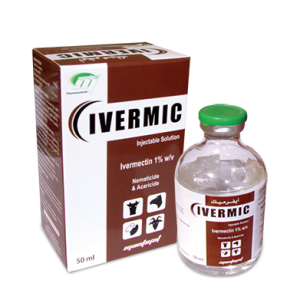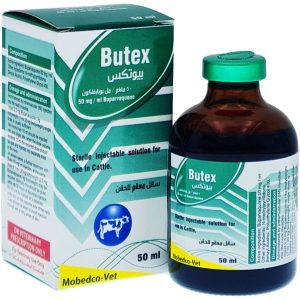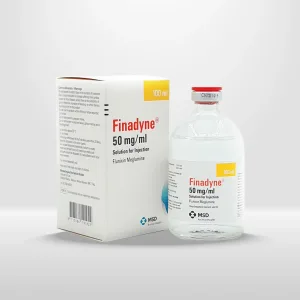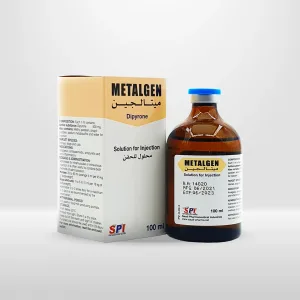
This shortcode is only available on vendor store pages.

This shortcode is only available on vendor store pages.
CALMAGINE | Dipyrone | Spasmolytic | for horses, dogs & cats
For Veterinary Use Only.
CALMAGINE is a veterinary antispasmodic designed for horses, dogs, and cats and used in painful conditions as horse colic. Wondering about its recommended doses? You'll find all the details and more outlined below..
Composition
CALMAGINE Characteristics
– The analgesic effect of CALMAGINE is due to its action on the nerve centres responsible for the perception of pain.
– As an antipyretic and anti-inflammatory agent, the drug accelerates the return to normality in the case of febrile conditions and inflammation associated with pain.
– As a spasmolytic, it exerts an effect on smooth and striped muscle fibres relieving the spastic contraction whether the origin be pain, inflammation or trauma. A simultaneous vasodilation occurs producing an improved irrigation of the affected tissues.
– CALMAGINE could be used in pain associated conditions (colic, uterine contractions, rheumatisms, paroxysmal myoglobinuria, arthritis, tendinitis, myositis, trauma); in spasm conditions (oesophageal obstruction, bloat, spasm of the uterine cervix, post-partum contractions).
CALMAGINE Indications
Use it as Antispasmodic.
CALMAGINE Dosage and administration
Deep intramuscular and intravenous administration.
IV. route is preferable where rapid intervention is necessary.
HORSES :
5-10 ml per 100 kg b.w equivalent to 25 to 50 mg of Dipyrone per kg b.w.
DOGS – CATS:
1 ml per 2.5 to 5 kg b.w. equivalent to 100 to 200 mg of Dipyrone per kg b.w.
The therapeutic effect begins 5-10 minutes after injection and persists for approximately 1 hour.
The injection may be repeated if the pain or agitation of the patient recur once the effect of the drug has worn off.
Recommendations
– If the I.M. route is adopted, the dose should be injected at several different points. Subcutaneous irritation may be produced by the injection of CALMAGINE, although necrosis and suppuration do not occur.
– The intramuscular injection should thus be carried out under strict aseptic conditions.
– Not to be used in food producing animals.
CALMAGINE Contra-indications
-Do not use it in conjunction with barbiturates, Phenylbutazone or Chlorpromazine.
-It is not to be used in food-producing animals.
STORAGE
DO NOT STORE IT ABOVE 25°.
| Size | 100 ml |
|---|
Vendor Information
- Store Name: صيدلية البعادي البيطرية
- Vendor: صيدلية البعادي البيطرية
- Address: المملكة العربية السعودية
- No ratings found yet!
Sulphadimidine 100% | Sulfamethazine | treats animal infections
Sold by صيدلية البعادي البيطريةCorebral | veterinary injection | vitamine B1-B6 | for animals
Sold by صيدلية البعادي البيطريةTOPICURE | spray for all types of wounds | for animals
Sold by صيدلية البعادي البيطريةRelated Products
Avitryl 10 | Enrofloxacin| Excellent respiratory antibiotic |for cattle
Interflox | enrofloxacin | antibiotic | for Cattle, sheep, and goats.
Vermectin Over | Ivermectin | Injectable endectocide | cattle
VERMECTIN injectable soln. | veterinary ivermectin | Livestock
Excede | Ceftiofur | Powerful respiratory antibiotic | For cattle& horses
-
Metalgen l Dipyrone | Anti-inflammatory and antipyretic | for animals
Sold by الحصن الحصين البيطريةRated 0 out of 520 ر.س






















Reviews
There are no reviews yet.